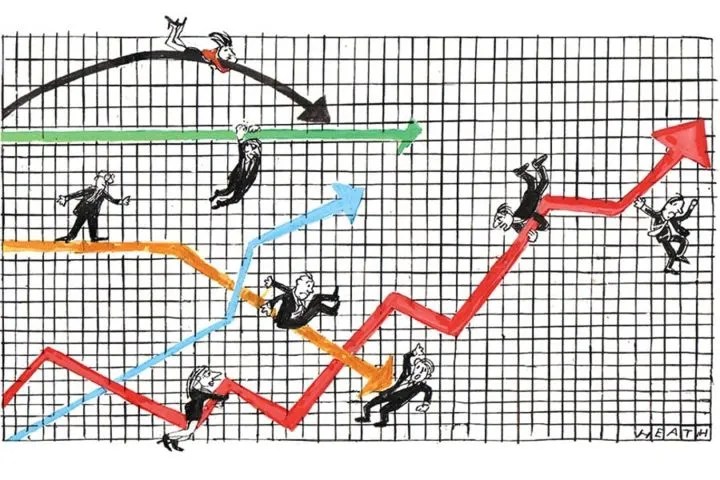Slowly but surely, the labour market in the UK appears to be cooling down. Data from the Office for National Statistics this morning shows the number of job vacancies across the economy fell by another 58,000 between July to September, taking the total figure to an estimated 957,000. This is still far above pre-pandemic levels, but the number has been dropping constantly, and is down again for a sixteenth consecutive period. Meanwhile, both the UK’s unemployment figure and inactivity figure have remained ‘largely unchanged on the quarter’: sitting at 4.2 and 20.9 per cent, respectively.
This bodes well for an economy that is trying to dodge the dreaded label of ‘stagflation’. The UK is experiencing virtually no growth, but at least, for now, its unemployment rate remains historically low. The figures come a day ahead of the next monthly inflation update, which markets are hopeful will see another slow down. That inflation has been consistently stubborn in the UK (still sitting at 6.7 per cent on the year in September, almost double the US rate) has made the prospect of stagflation taking hold more likely. It’s these unemployment updates that have done the heavily lifting to keep it at bay.
But the Bank of England will not be looking so favourably on today’s numbers. The Monetary Policy Committee has now held rates twice at 5.25 per cent, as they continue to monitor key indicators including the inflation data and wages. But this morning’s wage update will be concerning to some. Annual growth in regular pay (which excludes bonuses) was up 7.7 per cent between July and September this year: a rate which ONS director of economic statistics Darren Morgan says is now the fastest in two years. As the inflation rate slows, wages continue to outpace inflation: a recipe which the Bank thinks can create a ‘wage-price spiral’ that spurs on a secondary wave of price hikes.
There are plenty of reasons to be sceptical of wage-price spiral claims, not least because the underlying causes of inflation are almost always linked to monetary decisions and influxes in money supply – not negotiations taking place between employers and employees. Moreover, wages have only been going up in real terms for a matter of months, after a prolonged period of workers feeling poorer as inflation ate away at their purchasing power. With the inflation rate still at nearly 7 per cent on the year in September, these big-on-paper wage hikes won’t go nearly as far when consumers go to spend their money.
Still, this matters because we know that the Bank’s governor Andrew Bailey and the MPC are inclined to lean into the ‘wage price spiral’ theory and can be influenced by it when it comes to setting the bank rate. The last two votes to hold rates were tight, with the MPC voting five to four and then six to three to hold rates. Their next (and last) meeting before the end of the year may well be another close call. Markets seem to think we’ve reached the peak of rate hikes, around 5.25 per cent. But the Bank has been clear that another hike is possible, if inflationary pressures persist. The combination of today’s wage data and tomorrow’s October inflation update will go a long way to determining just how strong they think those pressures remain.







Comments